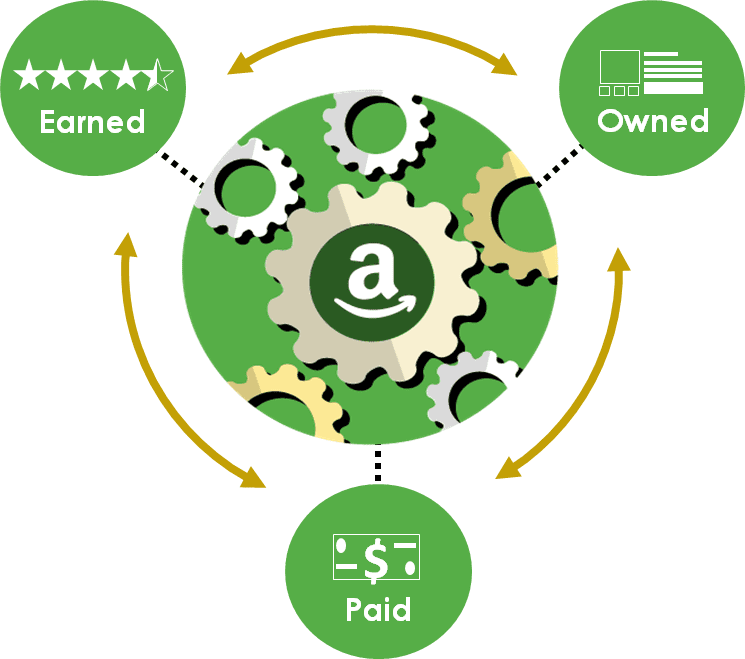As we’ve mentioned in a previous post, search engine optimization (SEO) on Amazon can boost your Amazon Prime Day 2020 performance. However, SEO is not exclusive to Prime Day or other seasonal events. Having high-quality, optimized listings is just as critical to your Amazon marketplace performance as inventory planning or even advertising.
Is your brand prepared for Amazon Prime Day 2020? In our Prime Day Prep video series, we dive into everything from inventory planning, digital advertising strategies, retail readiness, and more to help you weather the storm. Watch the videos here to make sure your brand is primed to succeed during a Prime Day like no other!

SEO can set your products up for success and even improve your advertising performance. With 70% of customers never clicking past the first page of Amazon search results, ensuring your listings are optimized gives your brand a higher probability of making it onto the first page of search results.
SEO on Amazon is not very different from other channels that you may be familiar with. The goal, as with all SEO, is to increase your rankings, traffic, and, ultimately, sales.
So, how do you go about optimizing your Amazon product listings? Here’s a beginner’s guide to all things Amazon SEO.
Amazon SEO Basics
First, we have to understand what Amazon’s algorithm looks at when it’s indexing listings for keywords. Amazon indexes product titles, bullets, descriptions, and A+ content to help determine which customer search queries your products will be highly relevant to. There are some backend keywords as well, but these are reserved for words that don’t fit in the main content, like misspellings.
Another thing to remember is that you’re persuading a human customer to click on your product – not just an algorithm. Remember to follow Amazon’s retail readiness guidelines as you’re working on SEO. Make sure your title & bullets are clear, your pictures are clear & sharp, and your product has enough reviews. Amazon considers a product retail-ready when it has at least 15 reviews and over 3.5 stars.
Optimizing Amazon SEO: Indexed Keywords
 So, how does one fully optimize a listing on Amazon? The process is very straightforward, and the best results come to those who don’t overthink it!
So, how does one fully optimize a listing on Amazon? The process is very straightforward, and the best results come to those who don’t overthink it!
The first question you’ll want to ask is, “Is my product indexed for the most obvious and relevant keywords?”
If your answer to that question is no, you now have a starting point. Any keywords or phrases that your product is relevant to but are not indexed will need to be added to the listing.
We will address what to do if your answer is “yes” further on.
Note: If you do not have in-house capabilities to check on indexing and track keyword rank, there are many third-party tools available to advertisers, such as Helium10.
Where do these keywords and phrases go? In our experience, the titles and bullets are the best areas for keyword insertion and optimization as these are the two areas customers see as soon as they get to your product detail page. Customers will see a portion of the title on the search results page. Make sure that your titles are robust enough that a customer will understand what your product is and does.
Now, if your product is indexed for the most obvious and relevant keywords, then you will still want to approach your optimizations in a similar manner. However, the questions you will ask yourself throughout the optimization process differ.
Are the highest-volume keywords and phrases you are indexing for in your title? Or are they hidden away in a product description that requires a customer to scroll down the product detail page?
While you may be indexing, it is important to ensure top keywords and phrases are in prominent positions. Make it easy for a customer to understand what your product is and what it does. This could mean moving keywords and phrases from the description to the bullets or vice versa.
112% Daily Sales Growth After Amazon SEO Optimization
 Along with the steps discussed in the optimization section, these are steps that we have taken with one of our current clients and have seen a tremendous amount of success. The two main metrics we’ve been tracking are average daily organic keyword rank as well as average daily sales of the products being optimized. Thus far we have seen an increase of 22.5% in average daily organic keyword rank (these are the ranking of the keywords and phrases that were inserted or made more prominent in the listing) and an astonishing 112.2% increase in daily sales following the implementation of our optimizations!
Along with the steps discussed in the optimization section, these are steps that we have taken with one of our current clients and have seen a tremendous amount of success. The two main metrics we’ve been tracking are average daily organic keyword rank as well as average daily sales of the products being optimized. Thus far we have seen an increase of 22.5% in average daily organic keyword rank (these are the ranking of the keywords and phrases that were inserted or made more prominent in the listing) and an astonishing 112.2% increase in daily sales following the implementation of our optimizations!
Before vs. After Amazon SEO Optimization
Because Amazon looks at the customer-facing content, it is critical to have high-volume keywords and phrases related to the products in the listings. For example, if you are an apparel brand and sell dresses, “dress” must be in your product titles. Don’t assume that your product will be indexed for “dress” just because the main image is clearly a dress.
This may seem obvious, but it’s easy to get so in the weeds that you miss this low-hanging fruit. Here’s an example of before and after optimization for a dress title:
- Before SEO: Clothing Brand Pocketed Allie Style 100% Cotton
- After SEO: Clothing Brand Dress, Pocketed Allie Style, 100% Cotton, Pink, Size Small
Pour Fuel on the Fire
As you know, the goal with SEO is to increase your ranking, traffic, and, ultimately sales. Each of these three pieces feeds into one another, creating a perfect harmony.

SEO leads to increased CTR and conversion rates. Amazon’s algorithm will begin to take note of this, leading to increased traffic and sales velocity, ultimately increasing your organic ranking.
One of the main pillars of the Amazon flywheel is owned media. SEO allows you to begin pushing this pillar alongside advertising and earned media. Your organic ranking is key because, remember, getting to the first page of Amazon search results is critical!
One way to expedite this process is to leverage advertising.
You may be thinking, “I’m already advertising, so what more do I need to do from an advertising perspective?” The key here is to set up Sponsored Products campaigns targeting the keywords and phrases you are adding into and/or reorganizing in your listings.
Sponsored Products ASIN targeting campaigns are also a great way to piggyback off top competitor products in your product’s category.



